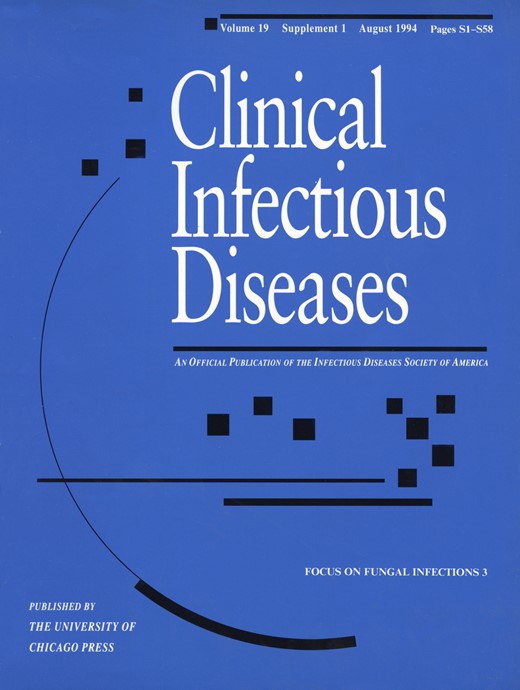-
Views
-
Cite
Cite
Demosthenes Pappagianis, Marked Increase in Cases of Coccidioidomycosis in California: 1991, 1992, and 1993, Clinical Infectious Diseases, Volume 19, Issue Supplement_1, August 1994, Pages S14–S18, https://doi.org/10.1093/clinids/19.Supplement_1.14
Close - Share Icon Share
Abstract
Coccidioidomycosis is endemic in California. In an 11-year period from the beginning of 1980 to the end of 1990, an average of ∼400–500 cases per year were reported to the California State Department of Health Services (CSDHS). In 1990, 441 cases were reported. However, a striking increase in the number of cases was noted in 1991, 1992, and 1993, particularly in the southern San Joaquin Valley counties of Kern and Tulare. In 1992, striking increases were noted in other counties as well. In California there were 1,200 and 4,541 new cases in 1991 and 1992, respectively, that were reported to the CSDHS. The usual rate (5%–7%) of metapulmonary dissemination was noted in these outbreaks, and cases resembling acute adult respiratory distress syndrome that had been noted infrequently in previous outbreaks were conspicuous among the 1991 and 1992 cases. Factors thought to contribute to the extraordinary increases in coccidioidomycosis were a drought of 5 to 6 years' duration; abundant rain in March 1991 and February–March 1992; construction of new buildings; and arrival of new, susceptible individuals to the areas of endemicity.







Comments